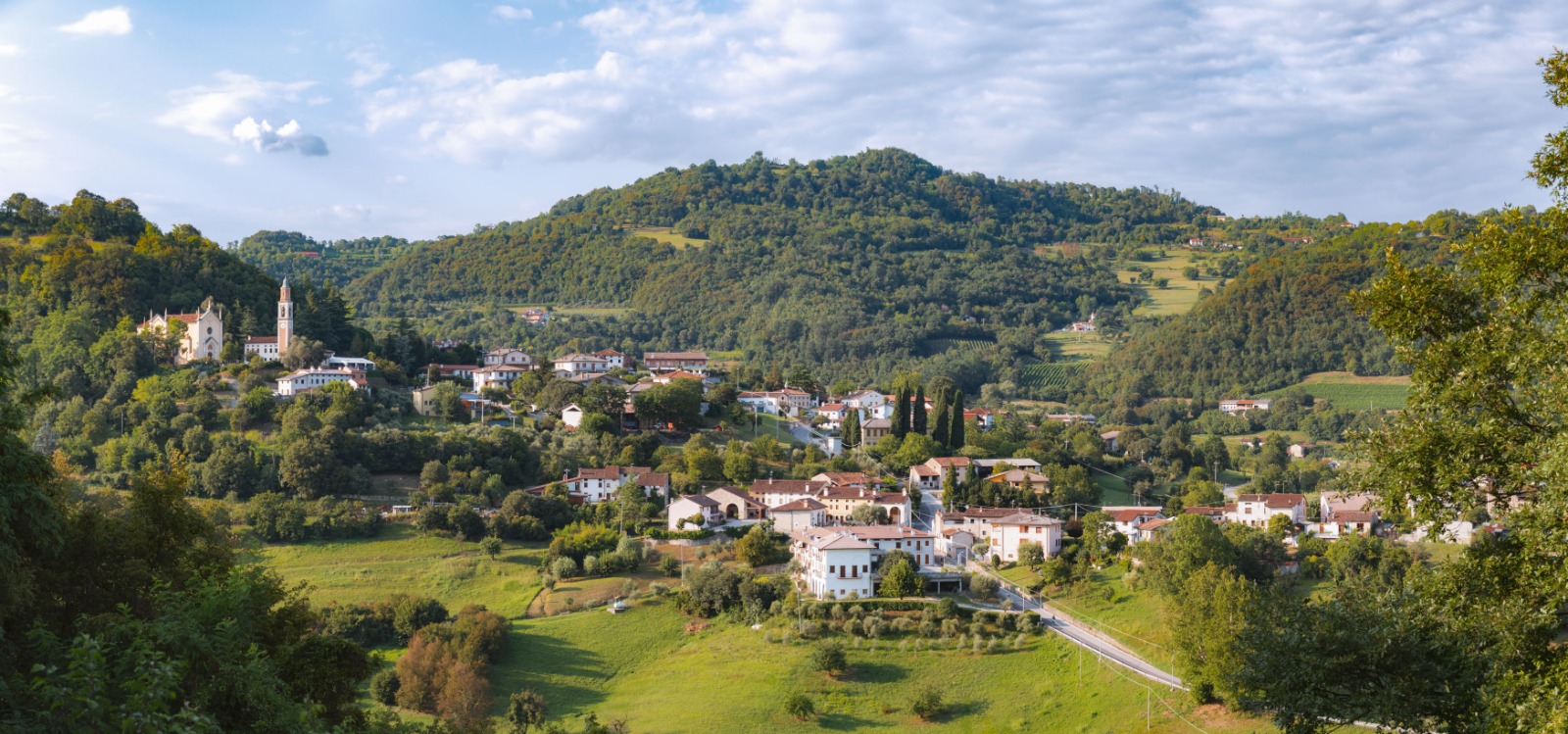"The Gambugliano administration wants to always provide its citizens with new services and, being part of the Piazza WiFi Italia project, a public and free national network, means taking a decisive step towards the digitization of the country.
Our lands were inhabited in pre-Roman times probably by the Euganei (the oldest inhabitants of North Eastern Italy of the pre-Indo-European type), pushed from the plain into the hilly and mountainous areas by the Venetians, and with these they merged for similar uses and culture between them around the first millennium BC The cult of the dead that these populations carried out, collecting the ashes in vases next to the burial system, anticipated the uses adopted by the Romans. There is no doubt that the territory was then settled by the Romans, as it is also evidenced by the toponym of a street "Pocastro", a clear vulgarization of the Latin "post castrum" indicating a site behind the military camp.
It was the Benedictines, in the eighth century, who contributed to reclaim the territory and to found the church which, it seems now established, dates back to before the year 1000.
Sources speak of the existence of a Castle, now completely destroyed, and which was in the current "Contrà del Castello". It had a double circle of defense walls with an elliptical-shaped stalls with an average diameter of ten meters. The castle is not listed in any of the imperial diplomas donated to the Bishops of Vicenza and this suggests that it was not a bishop's castle; however in the books of the fiefdoms of the bishop's table G. it is indicated "Feudum antiquo et antiquissimum" and it is evident from this last transcription that the Bishops had assets there. In the year 1267 the bishop of Vicenza Beato Bartolomeo (1255-1270) invested a certain Tebaldo da Gambugliano "with a pecia terre que potest esse quatuor campi apud castellum". According to some studies and observations by Mantese and Canova, on the study of the Vicentine castles, it is thought that it already existed before the 10th century and of origin and derivation of a Roman-era watchtower and signaling tower.
After the medieval period, Gambugliano, after various vicissitudes, followed the fate of Vicenza within the Serenissima Republic, until its fall.
With the European Restoration, the municipalities in 1815 were reduced from 131 to 123 in the Vicenza area and among them Gambugliano.At that time Gambugliano from dominant was merged with that of Monteviale and with the same hamlet of Monte San Lorenzo which in alternating phases was also an autonomous municipality during the eighteenth century. With this unification, disagreements and disputes began with Monteviale considered burdensome for the economic management of Gambugliano. After years of hard clashes and conflicts, after the annexation of Veneto to the Kingdom of Italy, which took place in 1866, the definitive separation of Gambugliano from Monteviale was sanctioned in 1905. "
